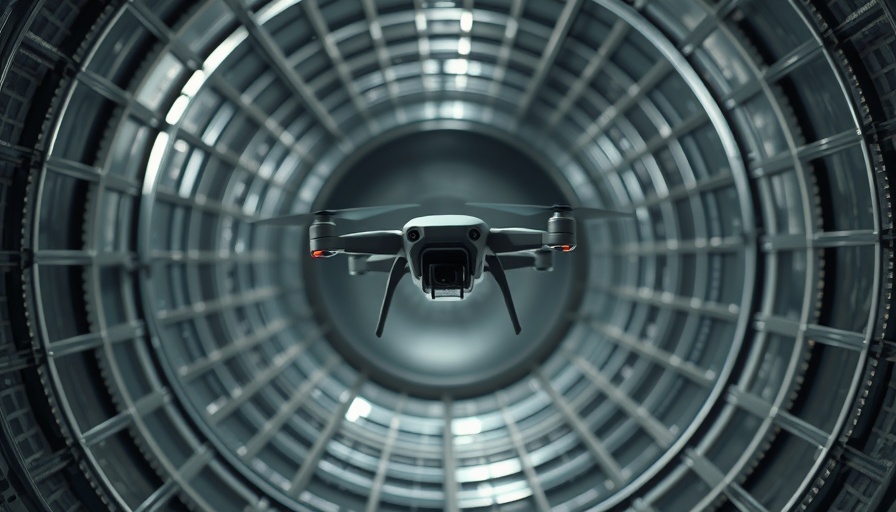
Unleashing Drones in Confined Spaces: A New Frontier for Aerial Technology
For many modern buildings, air ducts are both essential and often overlooked components of infrastructure, facilitating heating, ventilation, and air conditioning systems. However, these crucial structures pose a significant challenge for inspections due to their inaccessibility. Emerging research has found a way to harness the capabilities of small quadcopters to address this issue, opening new doors for safety inspections in enclosed environments.
Overcoming Obstacles: The Challenge with Traditional Inspection Methods
The nature of air ducts, with a diameter restricted to as little as 35 cm, prohibits human entry and, consequently, manual inspection. This limitation can lead to undetected issues that compromise air quality and system performance. Enter small quadcopter drones: their ability to maneuver both horizontally and vertically presents a potential game-changer. Yet, navigating these ducts isn't straightforward; the very presence of a drone creates airflow that can destabilize it, leading to turbulence that increases the risk of collision with duct walls.
Mapping Aerodynamic Patterns: A Scientific Approach to Drone Navigation
To combat this challenge, researchers from Inria, CNRS, and various French universities have embarked on groundbreaking studies into the airflow patterns within air ducts. Utilizing robotic arms equipped with force sensors, they constructed an aerodynamic map that reveals the complex dynamics at play. This pioneering work identifies perilous zones in circular ducts where drone instability could occur, thus guiding future drone engagements to avoid areas that pose the greatest risk.
Innovative Technology: Training Drones to Hover
Central to this research is the innovative approach of combining artificial intelligence with advanced sensor technologies. Using small laser systems and a neural network model trained on extensive motion capture data, the team has enabled drones to identify their positions accurately within the confined space. The result allows these drones to stabilize themselves in areas of reduced turbulence, significantly enhancing their safety during inspections.
Future Implications: Beyond Ducts
The implications of this research extend far beyond simple duct inspections. The next phase will encompass the development of a drone prototype capable of carrying sophisticated payloads, including cameras and thermal imaging devices. These technologies could redefine how buildings are monitored and could become integral in various sectors, from industrial inspections to public safety measures in emergency situations.
A Collaborative Effort Highlighting Research Potential
This project's success highlights the importance of collaborative research across institutions. The participation of esteemed organizations such as Inria, CNRS, and multiple universities underscores the shared commitment to pushing technological boundaries and fostering innovation. Such partnerships are not only critical for advancing drone technology but also for addressing broader societal needs.
As advancements in drone technology continue to unfold, it is clear that the ability to safely navigate and inspect confined spaces represents merely the beginning of a promising trajectory. The use of drones for inspecting air ducts could pave the way for further developments in infrastructure monitoring and disaster response.
 Add Row
Add Row  Add
Add 




Write A Comment